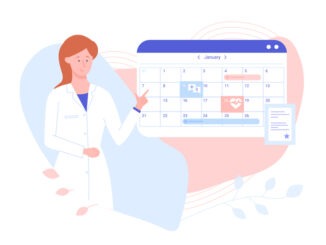
Here are some tips on how you and your employees can build a results-focused environment and get the most out of the workday
CREDIT: This is an edited version of an article that originally appeared on Work Life
In order to ensure that work gets done, businesses need a singular focus on what employees are doing – the tasks they need to complete, and how well they need to do them. This is often known as a ‘results-focused work environment’. Here’s where to start if you want to build one of your own.
Work back from business outcomes to individual ones
The first question is this, ‘Where does your operation need to be in two or five years’ time, in terms of your main indicator of success?’ To achieve this, what does each team need to do? How are these team aims then carved up between individuals?
Each staff member should have an exact barometer of how they are doing at work, and how much time and energy they need to put in. If they hit their targets and deliverables, then how they choose to split their day shouldn’t matter.
Trust
Some organisations have developed a taste for monitoring software that tracks employee’s screen time, mouse movements, and so on. These can be easily circumvented by wiggling the mouse now and then, and measure little more than the ability to sit near a computer. In fact, all they demonstrate is a deficit of trust and staff autonomy.
A report by Watson Wyatt shows that firms with high-trust environments outperform low-trust ones by 286% in shareholder returns (stock price and dividends); high-trust environments have 50% lower staff turnover than their competitors – but the main benefit of trust is emotional. It endangers understanding between team members that they will do the work to a good quality, at the right time – and that it doesn’t matter if they are working unusual hours or from disparate locations.
Use planning software
Asana, Jira, Trello, Proofhub – there is a glut of project management software out there, so choose wisely and according to your needs. Do you need a Gantt chart feature? Do you want integrated chat? These are the kinds of questions that need answering before you begin paying subs.
Once you’ve decided the outcomes you’re reaching for as an organisation, pop them into the planning software with ambitious, achievable, timelines that everyone can reference. Finally, make sure that, whichever you use, gets organisation-wide buy-in; it’s surprisingly common for teams to get siloed using different platforms, leading to people pulling in different directions. When you’re creating your results-only work environment, software can be a big help – use it!
Meet to revisit objectives weekly
Meetings for meeting’s sake consume too much time and energy but without regular check-ins on how people are progressing on their objectives, there’s little point in setting them; they’ll simply become things that vaguely hang over work, create stress and don’t actually lead to greater productivity.
The accountability of a semi-public setting also provides for greater dialogue between teams about how work is progressing – this is particularly important for teams that are working remotely.
Stop the lines being blurred when remote
With so many of us now working remotely it’s easy for work to seep into life. The boundary created by simply leaving the workplace must be recreated to ensure that people aren’t working more than they should be. Simply suggesting people work seven-to-eight-hour days, and asking them why they are still working when they send a message in the evening, is a good start.
Remote work is closely connected to outcomes-centric work, but to avoid burnout and an ‘always on’ culture – and to keep staff happy and productive – the former needs to be healthily implemented. Make clear what is expected of people, and what isn’t.
While hours worked will continue to have a degree of importance for most companies, research suggests that this is no longer the right measure of productivity. By trusting your employees, setting clear expectations, and creating a transparent, outcomes-driven culture, you will be on the path to success.
As organisations return to in-person working, and embrace more flexible ways of working, managing outcomes – not hours – will be crucial.



Be the first to comment